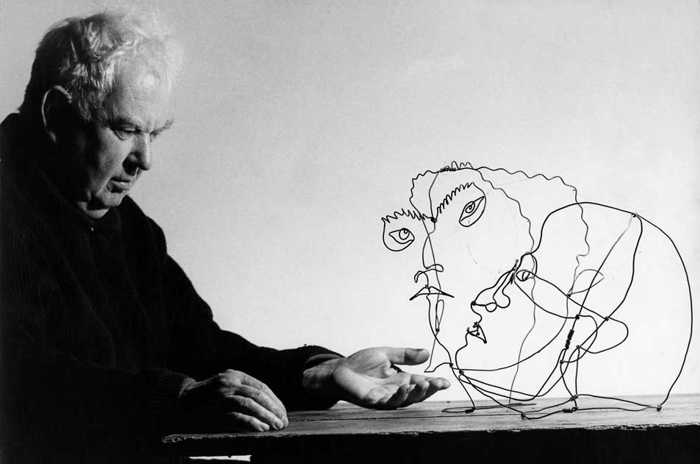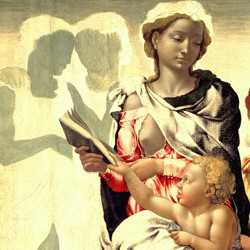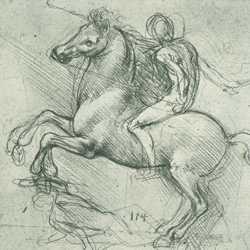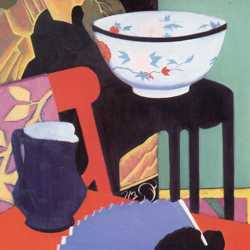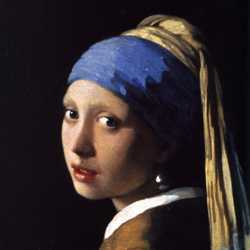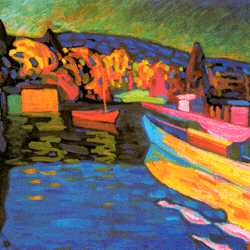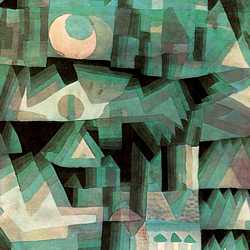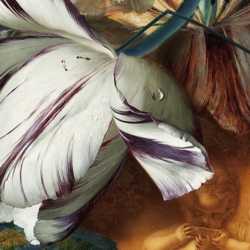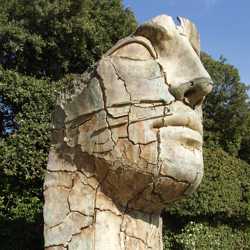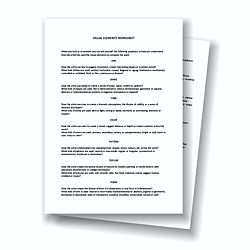The Visual Elements - Line
Line is the foundation of all drawing. It is the first and most versatile of the visual elements in art.
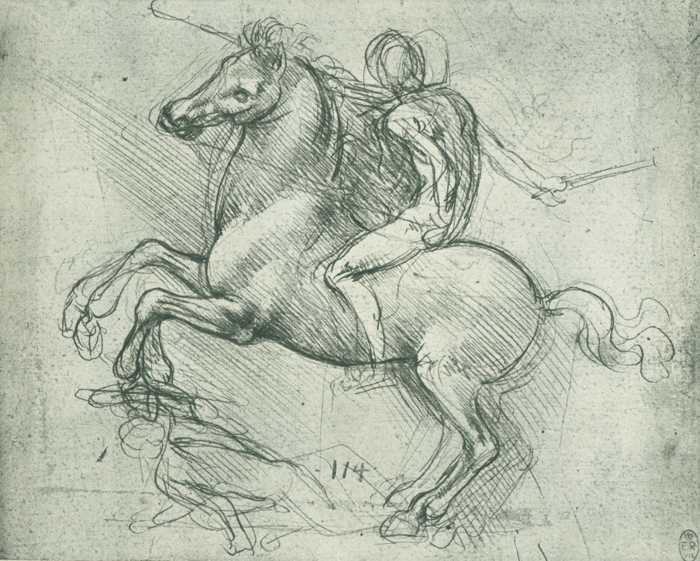
LEONARDO DA VINCI (1452-1519)
A Study for an Equestrian Monument, 1488 (metalpoint on blue paper)
The Visual Element of Line is the foundation of all drawing. It is the first and most versatile of the visual elements. Line in an artwork can be used in many different ways. It can be used to suggest shape, pattern, form, structure, growth, depth, distance, rhythm, movement and a range of emotions.
We have a psychological response to different types of lines:
-
Curved lines suggest comfort and ease
-
Horizontal lines suggest distance and calm
-
Vertical lines suggest height and strength
-
Jagged lines suggest turmoil and anxiety
The way we draw a line can convey different expressive qualities:
-
Freehand lines can express the personal energy and mood of the artist
-
Mechanical lines can express a rigid control
-
Continuous lines can lead the eye in certain directions
-
Broken lines can express the ephemeral or the insubstantial
-
Thick lines can express strength
-
Thin lines can express delicacy
Our selection of artworks illustrated below have been chosen because they all use line in an inspirational manner. We have analyzed each of these to demonstrate how great artists use this visual element as a creative force in their work.
Line as Tone and Form

HENRY MOORE (1898-1986)
Sheep, 1972 (intaglio print on paper)
In 1972, while preparing for a major retrospective exhibition of his sculptures in Florence, Henry Moore would relax by drawing the sheep in a field outside his studio. As a sculptor, Moore was fascinated by the subtle variations in the cushioned forms of their woolly fleeces and he recorded these observations in a sketchbook using a ballpoint pen. Some of these images were later reworked as etchings like the one above.
The vocabulary of scribbled and hatched lines that Moore developed for these drawings is very compatible with their subject. His swirling scribbles correspond perfectly to the bouncy texture of a fleece. He gradually builds up the density of line to render the darker areas of tone and reduces it to suggest the lighter. In the background of the work he uses hatched lines to draw the row of trees and the gate but any inconsistency in their style is immediately concealed in a haze of scribbles.
In this etching of 'Sheep', a singular style of line multi-tasks to express form, tone and texture with such empathy for the subject that you almost feel you could pull on the end of a line to unravel the entire drawing like a ball of wool.
Line as Texture
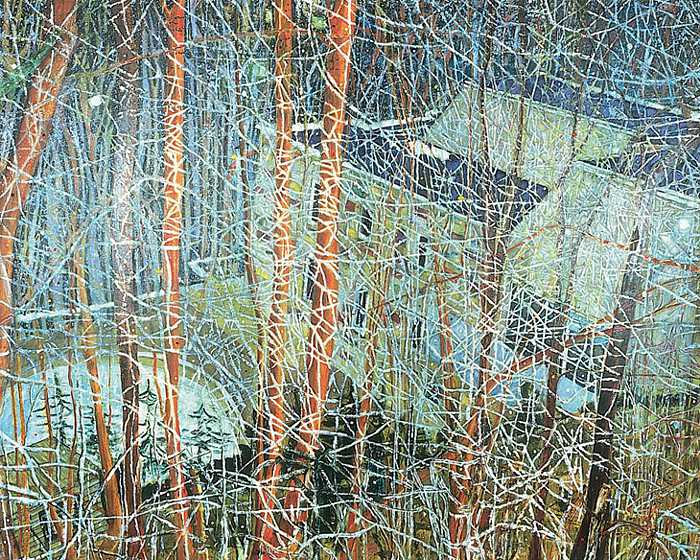
PETER DOIG (1959-)
The Architects Home In The Ravine, 1991 (oil on canvas, 200x275cm.)
The Architects Home In The Ravine is an enchanting painting by Peter Doig based on photographs and childhood memories of Beaumont House, the home of the famous Canadian architect, Eberhard Zeidler. This is a vast postmodern landscape that draws on many different artistic influences and ideas. You can see its Canadian heritage in the art of Tom Thomson and the Group of Seven. The painting is as much about surface as it is about depth, recalling the woodland scenes of Paul Cézanne and Gustave Klimt; it is as much about abstraction as it is about representation, evoking both the dense dribble and spatter of a Jackson Pollock and the isolation and emptiness of an Edward Hopper; and it is as much about the relationship between man and his environment, with nature reclaiming its own habitat as the architecture is menacingly encircled by the encroaching forest.
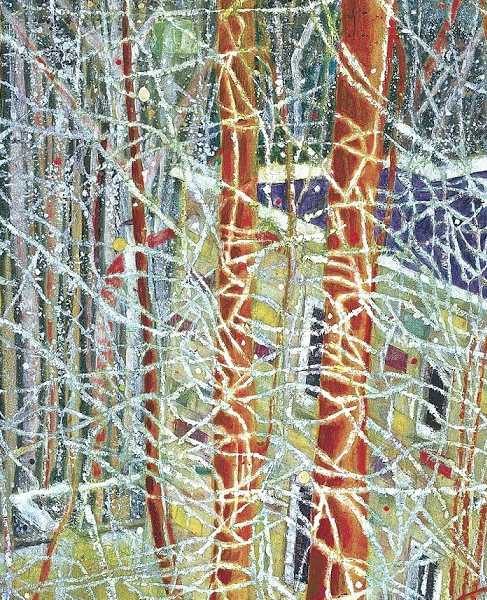
Detail of 'The Architects Home In The Ravine'
Viewed from a high eye-level, an impenetrable weave of frosted branches glisten with snow and hang like a veil, obscuring the ice-cold building and its frozen pool. If an artist from an earlier and more traditional era had painted this picture, he or she would have started with the distant features of the background, building the image layer upon layer until they finished in the foreground with the veil of branches. Doig, however, establishes this dense tracery of lines earlier in the painting process and uses it as a device to pull your eye to the surface of the work. He then begins to explore the expanse of that surface by painting between the branches to develop a rich patchwork of color and texture that focuses on the abstract and expressive qualities of the medium. 'The place is a kind of portal to possibilities in painting. The painting is what it becomes, and when I start I don’t know what that will be. That’s what makes the process so fascinating.' [1]
Line as Structure
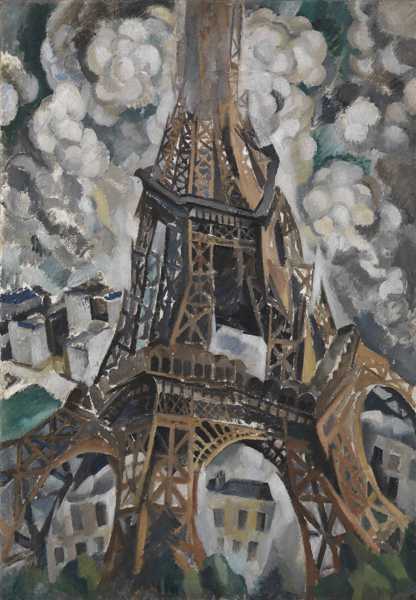
ROBERT DELAUNEY (1885-1941)
Eiffel Tower, 1910 (oil on canvas)
Line can be used to transmit the dynamic energies in the composition of an artwork. In his painting of the 'Eiffel Tower', one from a series of eleven painted between 1909-11 when the tower was the tallest man-made structure on the planet, Robert Delaunay adapts the rhythmic lines of its structure to suggest its staggering power as it ascends into the skies. The contrasting curves of the clouds double up as billowing dust as this colossal construction bursts through the municipal buildings to become the global symbol of modernity at the onset of the Modernist age.
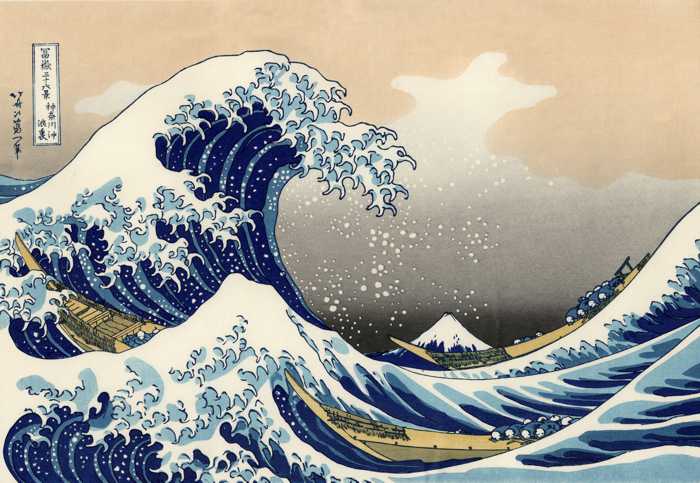
KATSUSHIKA HOKUSAI (c.1760-1849)
The Great Wave off Kanagawa, 1823–29 (woodblock print from '36 Views of Mount Fuji')
All the lines in Katsushika Hokusai's woodcut sweep with tremendous force, rising to a crescendo on the crest of the 'Great Wave off Kanagawa'. The swell of the wave is reinforced by the contour lines that describe the density of its wall, while its breaking surf claws the air to maintain its seismic energy. The power of this movement is further amplified by the helpless boats, cast adrift on the merciless sea. To heighten the drama, Hokusai freezes the action just at the critical point where the 'Great Wave' breaks, threatening to engulf the distant peak of Mount Fuji.
Line As Emotion
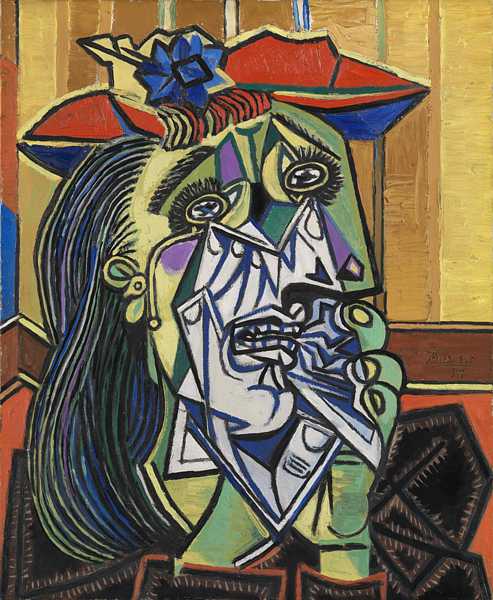
PABLO PICASSO (1881-1973)
Weeping Woman, 1937 (oil on canvas)
Picasso's 'Weeping Woman' was the last of nine paintings and twenty seven drawings on the tragic theme that was developed from 'Guernica', his vast monochromatic masterpiece of the same year. It symbolized the grief and suffering of the innocent victims of Guernica, the Basque town that was bombed by the German Luftwaffe and the Italian Fascist Aviazione Legionaria in support of General Franco during the Spanish Civil War.
In 'Weeping Woman', Picasso combines a synthetic cubism with a stained glass like structure. Jagged lines, fractured shapes and acid colors set the despairing tone of the work. The desolate woman's tortured emotions are heightened by the artist's careful balance of bold lines, exaggerated color and simplified drawing. Picasso uses strong dark lines to pull the fragmented image together and to subdue the optical shock of opposite colors (red/green, yellow/purple, blue/orange). Despite this, his heavily laden pigments can still generate enough chromatic intensity to provoke a state of alarm. The woman's eyes are like shattered headlights, pierced by the fractured shards of the handkerchief; her chattering teeth gnawing convulsively on its cloth. These combine in a pale aqueous blue - a dramatic contrast of monochrome against color. Even the stitching in her jacket weaves a mesh of thorns and all is sharp and angular in this visual definition of despair.
Line as Energy
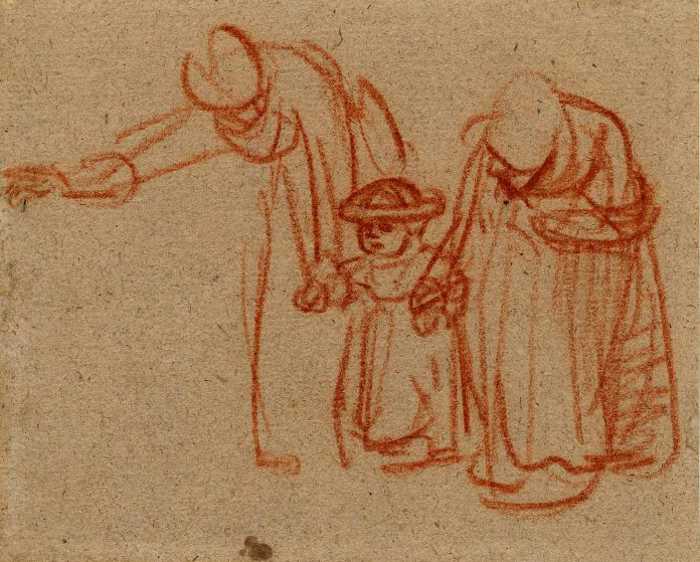
REMBRANDT VAN RIJN (1606-1669)
Two women teaching a child to walk, c.1635-37 (red chalk on paper)
This sketch by Rembrandt is a masterful study in line done for the simple joy of the subject. To be able to capture the sensitivity of this tender moment with such economy of means is not only a remarkable testament to the power of line as an expressive force but also an illustration of Rembrandt's outstanding drawing skills. Although it does not contain a great deal of detail, this is a work of intense observation and energy. In a quick sketch that took less than a minute to complete, Rembrandt manages to capture the unsteady balance, the emotional bond and the generational relationship of the figures. He also achieves remarkable accuracy in the drawing of the child's hat which has been recognized as a contemporary model designed to protect young children from falls. In the hands of a great master like Rembrandt, a simple line sketch can communicate more in a minute than the average artist can convey in a month.
Line as Form
Before Alexander Calder developed a reputation as one of the great abstract sculptors of the 20th century, he created figurative works with wire and pliers. He would bend, twist and crimp wire to form three-dimensional portraits of celebrities and friends that had all the vitality and spontaneity of a line drawing in space. These works had an element of caricature about them but they still retained a remarkable likeness to their subjects who often received them as tokens of friendship. Calder would suspend these 'portraits' from twine which allowed them to rotate slowly, revealing a surprising impression of volume for such limited means and demonstrating that unique control of line that is so often seen in the drawings of sculptors.
Line as Abstraction
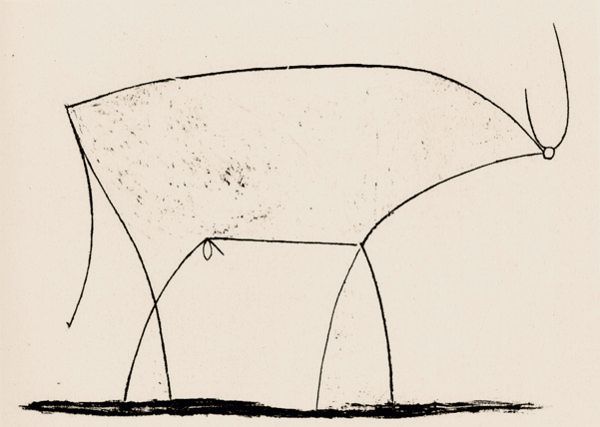
PABLO PICASSO (1881-1973)
Bull - plate 11, January 17 1946 (lithograph)
At the top of this page we said that line was the first visual element in an artwork. In Picasso's 'Bull' it is also the last. This drawing is the last in a series of eleven studies that lead you through a process of abstraction, refining form, tone and texture to extract the essence of the 'Bull' in a single line. You can follow the entire process on another of our pages: Pablo Picasso - Bull: a Masterclass in Abstraction.

